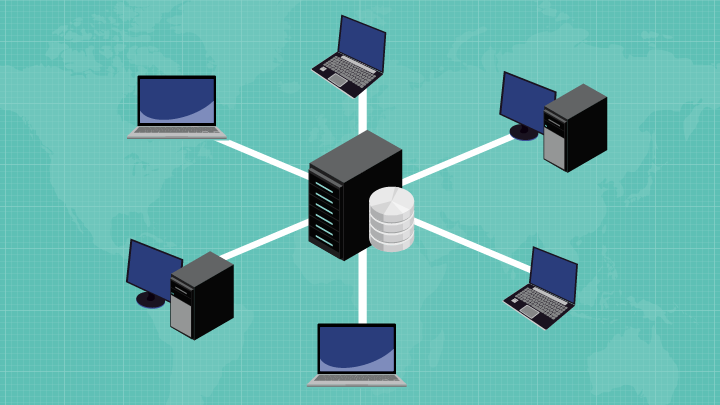As enterprises grow, so do their location counts. This results in a distributed enterprise, where a single organization is made up of several locations or branches, both physical and/or remote. These organizations rely heavily on cloud services, high-speed WANs, POS systems, telecommunications platforms, and various endpoints to communicate and share data.
Traditionally, distributed enterprises have been retailers, banks, hospitals, and other physically dispersed organizations. However, the pandemic era of remote work has ushered in a whole new distributed enterprise scenario where employees collaborate from far off locales, operating in office spaces, apartments, and corner cafés. It’s wise to approach cybersecurity for remote and hybrid workforces in a similar way to distributed enterprises because protecting distributed enterprises merits extra care and a thoughtful approach to IT.
A distributed enterprise = more risk
Cybersecurity risks are steadily increasing as attacks become more sophisticated, more personalized, and, when successful, more debilitating. Distributed enterprises are especially vulnerable because of their large “attack surfaces” with many points of vulnerability. An enterprise’s attack surface comprises both the physical (actual devices or files that can be compromised in-person) and the digital (software, hardware, and applications that users use daily). The larger the attack surface, the more challenging it is to protect.
Distributed enterprises are also at higher risk because IT resources are typically centralized in one location, such as the headquarters, leaving other locations with few or no onsite IT resources. This can result in inconsistently enforced protocols, lapsed software updates, and an undisciplined approach to asset protection.
Remote work environments have proven to be even more challenging because employees may use personal devices not configured by IT, and they may work in vulnerable environments, such as public spaces with shared internet access. Complicating matters further, these employees are often on the move, presenting new challenges with every location.
Proactive protection
When it comes to choosing suitable cybersecurity solutions, scalability and flexibility are key. Any enterprise location could ramp up, scale back, open, or close unexpectedly—extreme weather events and the shifting pandemic landscape are recent examples. Having flexible and scalable solutions helps companies to expect the unexpected, navigate a dynamic environment, and mitigate impacts.
At Pacxa we integrate the following solutions and strategies to ensure that risks are proactively managed and won’t hinder growth:
- Next-generation firewalls (NGFW). NGFWs take traditional firewalls to the next level with added, security-boosting features such as application-level inspection and intrusion prevention.
- Centralized management. Centralized management is the practice of using central sets of tools, processes, and resources to manage cybersecurity. With this type of management, businesses gain visibility and ensure compliance.
- Zero Trust model. Simply put, with a Zero Trust model, no user or device is trusted. Every user and device must be verified before gaining access to the resources on the network.
Pacxa has employed these and other cybersecurity strategies for our distributed enterprise clients to proactively protect against cyberthreats and enable them to successfully scale in the future. As organizations highly vulnerable to cyberattacks, distributed enterprises must utilize modern, scalable cybersecurity measures. Contact Pacxa today to ensure that your organization is protected.


